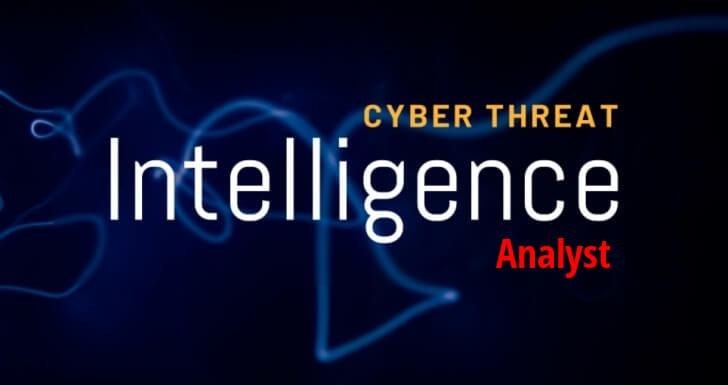Nowadays, Cyber crimes are increasing. The demand for cyber thteat intelligence experts is high. The field of cyber Intelligence is growing and booming, and the skills of professionals in this field will continue to be in high demand.
In this article, we will discuss about Cyber Threat Intelligence.
Threat intelligence is for everyone, no matter what security role we play. It’s not a different domain of security — it’s a frame of reference that helps us work smarter, whether we’re staffing an SOC Analyst, managing vulnerabilities, or making high-level security decisions. To make things easier, not harder, threat intelligence should integrate with the solutions and workflows we already depend on and should be easy to execute.
Threats are coming from everywhere such as open web, dark web, partners, internal, third parties, brand attacks and a true view of our entire threat surface is needed or else vulnerable.
This architecture increases the value of security teams and devices by uncover unknown threats, informing better decisions, and driving a common understanding to finally expedite risk reduction across the organization.
The cybersecurity strategy requires the execution of techniques and technology to driven reduce risk and stop threats fast.
Significance of Threat Intelligence:
The cybersecurity industry faces countless challenges on daily basis and roundabout threat actors, a daily flood of data full of irrelevant information and false alarms across multiple, unconnected security systems and a serious shortage of skilled professionals.
Threat intelligence allows us to prevent and reduce attacks on digital systems. Threat intelligence provides factors like who’s attacking us, what their motivation and capabilities are, and what indicators of compromise (IOCs) in our systems to look for. It helps us to make knowledgeable decisions about our security.
Different Teams with Different Roles and Responsibilities:
- Security Operations Teams: These teams are oftenly unable to process the enormously flow of alerts they receive. Threat intelligence prioritize and filter alerts and other threats and work on them with security solutions.
- Vulnerability Management Teams: They precisely prioritize the most important vulnerabilities. Threat intelligence team provides access to outward vision and environment that helps them differentiate immediate threats to their specific business from possible threats.
- Fraud Prevention, Risk Analysis and Other High-Level Security Staff: They are challenged to understand the current threat landscape. Threat intelligence provides key insights on threat actors, their intentions and targets, and their tactics, techniques, and procedures (TTPs).
Threat Intelligence is classified into two categories:
- Operational Threat Intelligence: It gives information regarding ongoing cyber-attacks, events and gives incident response teams specialized insights that help them understand the nature, target, and timing of specific attacks as they are occurring. It’s basically sourced from machines and provides technical information regarding attacks.
- Strategic Threat Intelligence: It provides a summary of an organization’s threat view. This type of intelligence requires human intervention in a high level of aspect. Information are related to business oriented such as reports and orientations that can’t be generated by machines but only by human with proficiency.
Vulnerability Management
“The acceptance of our weakness is the first step in rectifying our loss“.
Everyone needs to protect their company from cyberattacks, especially targeted ones that try to exploit a vulnerability in your applications. Nowadays, cyberattacks are widespread, thus every year, each company gets exposed to multiple vulnerabilities.
However, the number of breaches and threats has increased every year, only a small percentage were based on new vulnerabilities. According to research from the analyst firm Gartner: “More threats are leveraging the same small set of vulnerabilities.”
According to research, the average time it takes between the identification of a vulnerability and the appearance of an exploit has dropped from 45 days to 15 days over the last 10 years.
- We have roughly two weeks to patch or remediate our systems against a new exploit.
- If we can’t patch in that time-frame, we should have a plan to mitigate the damage.
According to IBM X-Force research team that if a vulnerability is not exploited within two weeks to three months after reported, it is strictly unlikely that it ever will be. Thus “old” vulnerabilities are usually not a priority for patching.
One of the very first forms of threat intelligence was NIST’s National Vulnerability Database (NVD). It centralized information on disclosed vulnerabilities to help make it easier for organizations to see if they were likely to be affected. For more than 20 years, the NVD has collected information on more than 100,000 vulnerabilities, making it an invaluable source for information security professionals.
Malware Analysis
Advanced Cyber-attacks keep on increasing by APT threats that target most of the enterprise-level networks and individuals. Preventing Enterprise networks from advanced level threats is challenging tasks for malware analysts and threat researchers to break down the complete malware samples.
There is a huge skill gap to approach, analysis and break down the advanced malware attacks from APT hackers around the world.
Examine the malware, Exploit Development and Reverse Engineering course is address to modern threat attacks and understand the vulnerabilities that are oftenly exploited by experienced security professionals and hackers.
You can take Certified Malware Analyst course from one of the worlds Leading learning platform with a complete practical approach training.
Cyber Kill Chain
One of the known Cyber Threat Intelligence Framework is Cyber Kill Chain. It has seven stages of an attack as follows:
- Reconnaissance
- Weaponization
- Delivery
- Exploitation
- Installation
- Command and Control
- Actions and Objectives (sometimes referred to as exfiltration)

The Cyber Kill Chain also allows organizations to build a defense-in-depth model that targets certain parts of the kill chain.
Apart from above all, there are many more , so, moving toward a Security Intelligence Program, anyone can opt for the course of “Certified Cyber Threat Intelligence Analyst”.
Threat intelligence must provide the context to make informed decisions and take action. Even if we have initiated our security intelligence lead or we are many years into the strategy, efficiently reducing the risk is the ultimate goal.







